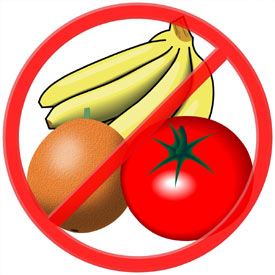 |
|
Introduction
Potassium in your child's blood may become high or low from medications. Some medications, like cyclosporine, may make your child hold on to potassium, while some diuretics, like Lasix, may make the child lose potassium. Many fruits and vegetables are high in potassium and should be avoided or limited in the diet in the event that high blood potassium is a problem. The following are some examples of fruits and vegetables which are high in potassium and should be avoided when blood potassium is high:
Vegetables such as broccoli, greens or potatoes can be leached to reduce their potassium content:
· Peel fresh vegetables and cut into thin strips. Thaw and drain frozen vegetables. Soak in hot tap water for 2 hours or in cold water overnight. Drain, rinse and drain again. Cover with fresh water, boil for 5 minutes, simmer until done. Drain well and serve (boiled, french fried, home fried, or mashed) or freeze for later. Milk, buttermilk, yogurt or milk products contain high levels of potassium. If you need to limit your child's potassium, then limit milk to 1 cup per day.
Fruits to Avoid:
|
Vegetables to Avoid: |
Apricots
Avocado
Banana
Cantaloupe
Dried fruits
Honeydew melon
Kiwi
Nectarines
Oranges
Papayas
Prunes |
Broccoli
Dried Beans
Greens (collard, spinach)
Potatoes
Pumpkin
Squash
Sweet potatoes
Tomatoes
Tomato juice
V-8 Juice |
|
|